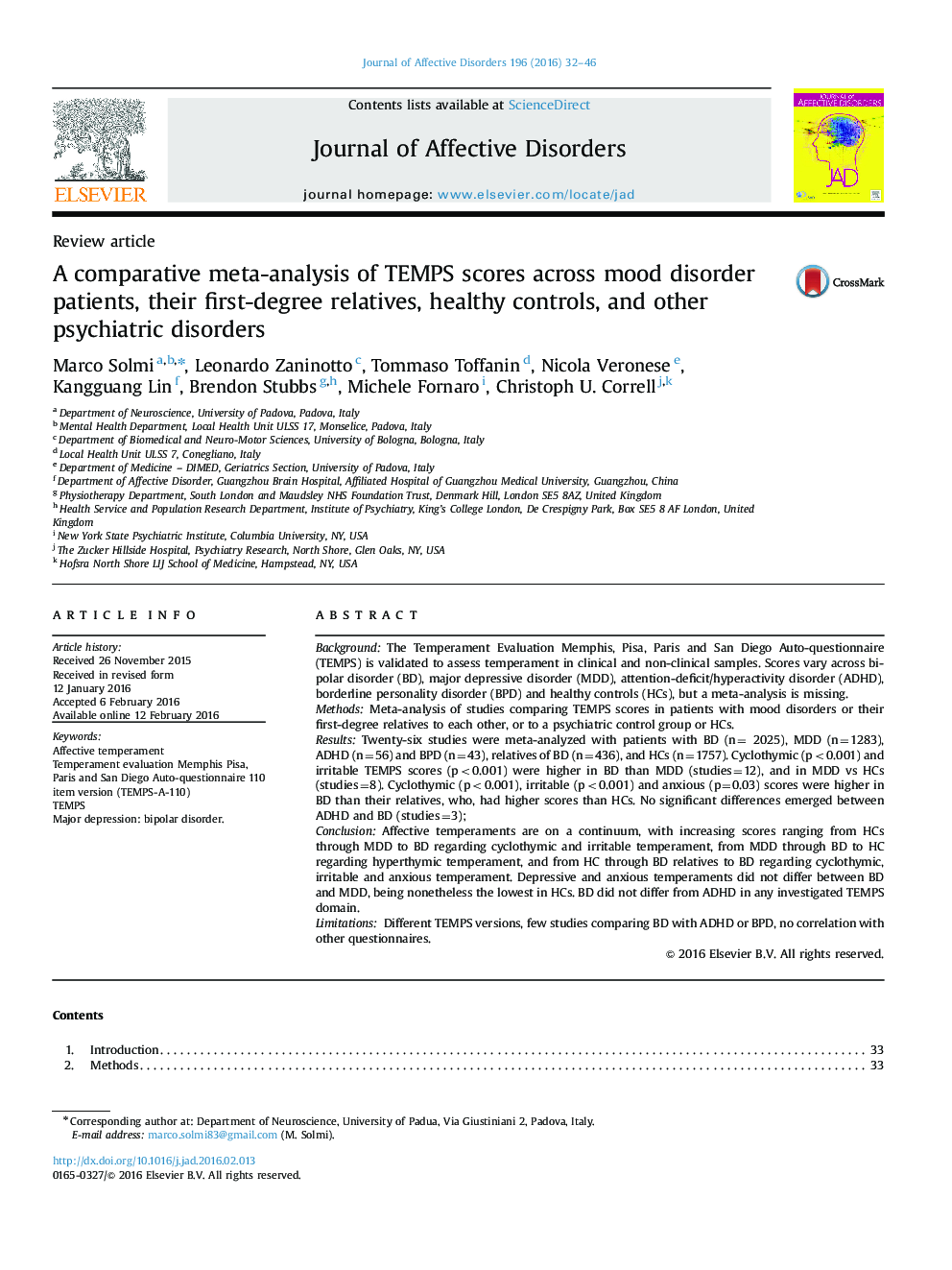| کد مقاله | کد نشریه | سال انتشار | مقاله انگلیسی | نسخه تمام متن |
|---|---|---|---|---|
| 6230307 | 1608129 | 2016 | 15 صفحه PDF | دانلود رایگان |

- The first meta-analysis of TEMPS score across psychiatric disorders, their relatives, and healthy controls.
- 26 studies, 2025 patients with BD, 1283 with MDD, 56 with ADHD, 43 with BPD, 436 relatives of BD, and 1757 HCs.
- Cyclothymic,and irritable TEMPS scores develop on a continuum, from HCs through MDD to BD.
- Cyclothymic, irritable and anxious scores develop on a continuum from HCs, through BD relatives to BD.
- No difference in any TEMPS score between BD and ADHD.
BackgroundThe Temperament Evaluation Memphis, Pisa, Paris and San Diego Auto-questionnaire (TEMPS) is validated to assess temperament in clinical and non-clinical samples. Scores vary across bipolar disorder (BD), major depressive disorder (MDD), attention-deficit/hyperactivity disorder (ADHD), borderline personality disorder (BPD) and healthy controls (HCs), but a meta-analysis is missing.MethodsMeta-analysis of studies comparing TEMPS scores in patients with mood disorders or their first-degree relatives to each other, or to a psychiatric control group or HCs.ResultsTwenty-six studies were meta-analyzed with patients with BD (n= 2025), MDD (n=1283), ADHD (n=56) and BPD (n=43), relatives of BD (n=436), and HCs (n=1757). Cyclothymic (p<0.001) and irritable TEMPS scores (p<0.001) were higher in BD than MDD (studies=12), and in MDD vs HCs (studies=8). Cyclothymic (p<0.001), irritable (p<0.001) and anxious (p=0.03) scores were higher in BD than their relatives, who, had higher scores than HCs. No significant differences emerged between ADHD and BD (studies=3);ConclusionAffective temperaments are on a continuum, with increasing scores ranging from HCs through MDD to BD regarding cyclothymic and irritable temperament, from MDD through BD to HC regarding hyperthymic temperament, and from HC through BD relatives to BD regarding cyclothymic, irritable and anxious temperament. Depressive and anxious temperaments did not differ between BD and MDD, being nonetheless the lowest in HCs. BD did not differ from ADHD in any investigated TEMPS domain.LimitationsDifferent TEMPS versions, few studies comparing BD with ADHD or BPD, no correlation with other questionnaires.
Journal: Journal of Affective Disorders - Volume 196, 15 May 2016, Pages 32-46